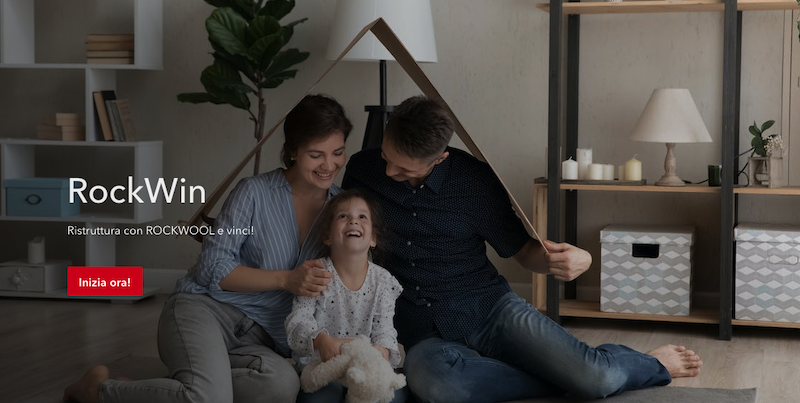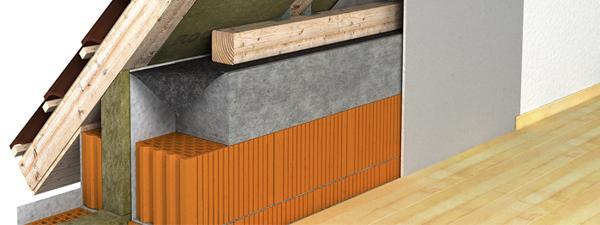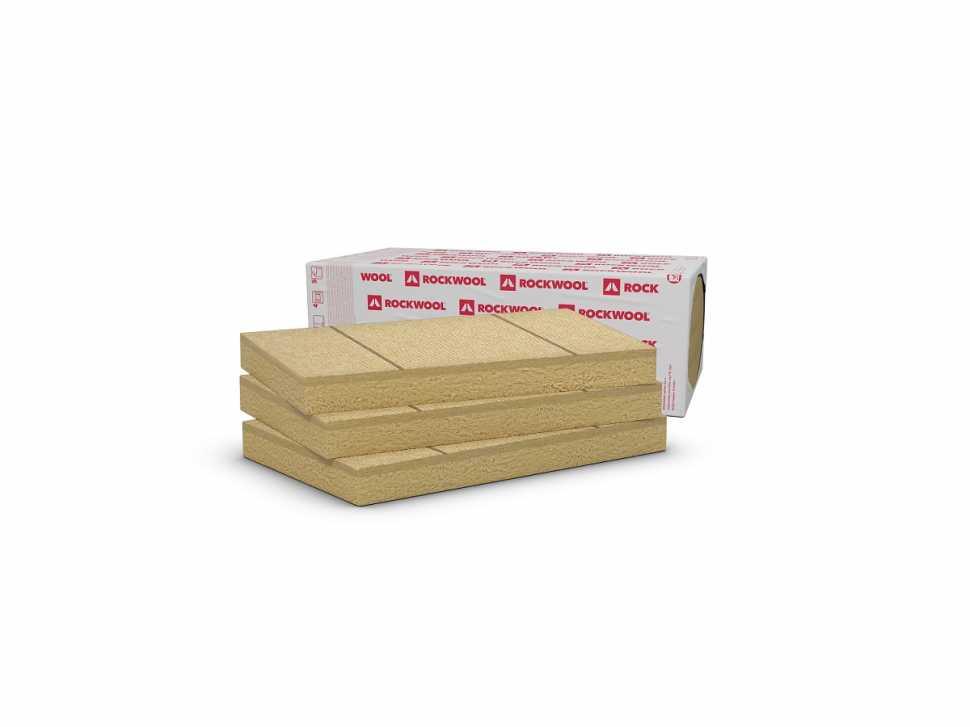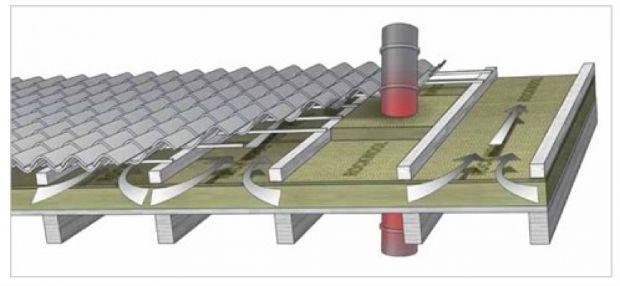To limit heat loss in your home and therefore promote energy saving, it is necessary to act by applying appropriate thermal insulation.
Thermal insulation improves living comfort
The aim of limit heat loss of a building by improving itsenergy aspectcan be achieved with the application of an accurate insulation of the roofs, walls and underground floors.
The strategies of the energy saving encourage the use of materials coming from renewable energy sourceswith the aim of safeguarding available resources and the environment.
The existing building heritage is characterised by often high thermal consumption, due both to a ventilation not properly controlled, either to an ineffective one Building insulation for the presence of thermal bridges in the structure, which favor the heat dispersion and the formation of internal humidity.
Roof Insulation – Rockwool
The choice of theinsulating most suitable must be based not only on the property of the material that we will use but also on characteristics from the structure to be isolated and on the performance that you want to achieve.
Choosing the most suitable thermal insulation
In choosing thethermal insulation Some factors need to be considered:
- lo thickness of the material. A greater thickness of insulation produces greater insulation, regardless of the material in question;
- il thermal conductivity value (lambda λ). The smaller its value, the greater the insulating power of the material. It is therefore advisable to opt for materials with low thermal conductivity;
- lo thermal phase shiftthat is, the time taken for heat to pass through a material.
Materials with a high thermal phase shift allow, especially in summer, that the peak of external heat can reach the interior of the home over a very long period of time, towards the evening, so to cool the environment it will be enough to open the windows. In climatic zones where summer temperatures are high even in the evening, it will be necessary to limit the heat that reaches the interior; - the vapor diffusion resistance (mi µ), indicates the Breathable power of the material. The smaller its value, the more breathable the material. A breathable material helps eliminate condensation.
Finally, given the same fundamental characteristics, the choice could be oriented towards insulation of natural origin, non-toxic, durable e resistant to fire and attack by microorganisms.
Thermal insulation of mineral origin
I mineral thermal insulators I am from natural origin, therefore renewable e recyclable.
A mineral thermal insulator such as rock woolis obtained from rocks, especially volcanic ones.
Il production process It is very similar to the natural action of volcanoes, and begins with the melting of volcanic rock at a temperature of 1500 °C, after a selection of the raw material. The molten rock is then transformed into fibre and sprayed with resin and oil, to make the material stable and water repellentthen it goes into a polymerization oven and after hardening it is ready for processing, cutting to size and packaging.

The rock wool presents a open cell structure which prevents the passage of heat and cold ensuring theabsorption of sound waves.
Its use is particularly suitable for creating external and internal coats, for ventilated facades and roofs, insulation of dividing walls, false ceilings, underfloors and for insulating attics.
The company’s insulators ROCKWOOL They are among the few industrial products capable of making save more energyCO2 and air pollutants than those consumed and emitted during its production process.
Rock wool insulation: characteristics
The insulation consists of basaltic volcanic rock woolin addition to ensuring excellent performance atthermal insulationprotects people and environments from stress acousticdal fireas it resists temperatures up to 1000°C, reducing the risk of fire and limiting the emission of toxic gases.
Furthermore, rock wool is stable over timemaintaining its characteristics unchanged, despite variations in temperature and humidity.
Rock wool is eco-friendlybecause it is produced with materials that are widely present in nature and can be recycled, reducing waste.
Building insulation products and solutions
Every home can be transformed into a comfortable home e sustainable using insulating products suitable for every domestic environment.
L’insulation from the cover is essential for the significant heat loss by transmission from the roof and from the point of view of the energy saving on internal heating.
The technological system of pitched or flat roofing is based on the following technical aspects:
- il Waterproofing check to water by means of the sealing element;
- il heat flow control through the presence of an insulating layer;
- il condensation control interstitial through ventilation and/or by adding a vapour diffusion control layer.
High performance of thermal and acoustic insulation are obtainable by applying the covering of high density rock wool panelsplaced on the extrados or intrados.
From a mechanical point of view, the rock wool panel is compression resistant and concentrated load or punctual, a useful property with regards to the ability to resist the load transmitted through the support strips of the sealing element, in the case of sloping wooden roofs and to walkability in the case of flat roofs.
I double density panelshave a denser and more rigid surface layer capable of distributing the load over a larger portion, reducing stress. Furthermore, they can be walked on right from the installation stage.
Insulation with ventilated facade
The creation of a ventilated facade allows you to obtain important advantages related to the general performance of the building envelope.
L’continuous isolationalso in correspondence with the structural elements, eliminates thermal bridges.
Through the laying of theinsulation from the outside it is possible to make greater use of the thermal inertia of the facing, with better control of temperatures and thermal changes, with consequent advantages Of living comfort.
I rock wool panelsbeing permeable to steam, allow for the creation of breathable closuresensuring the migration of steam.
The ventilated facade improves summer energy performance thanks to the ventilated cavity that removes excess heat from solar radiation.
Even from the point of aesthetic viewthe ventilated facade can become a solution for the restyling total of thebuildingthanks to the many finishing possibilities available on the market and the possibility of coating in black mineral veil.
If you want to run simulations of the building to understand how it is possible to reduce consumption, you can use free tools made available by ROCKWOOL.

In this way it will be possible to identify the ideal solutions for restructuring and it will be possible to visualize the reduction in energy demand. Furthermore, as an additional option, with the initiative RockWin there will be the opportunity to send your support request to a network of professionals and win a prize at the end of the work.
End of Article
THE EDITORIAL TEAM RECOMMENDS
The 11,700 employees present in more than 39 countries, with their professionalism support customers in the development of their business.
ROCKWOOL offers, in addition to the range of rock wool panels for the thermal-acoustic insulationAlso acoustic false ceilings e facade cladding which allow the construction of buildings that are safe in the event of fire, energy efficient and characterised by high acoustic comfort.
ROCKWOOL insulations are eco-friendlyas they allow saving up to 100 times the energy used for their production. They allow preserving scarce energy resources, reduce air pollution and CO emissions2.
Source: www.lavorincasa.it






